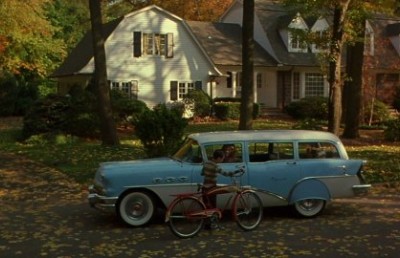The Vernal, The Visceral and The Violent: The Texas Chain Saw Massacre and The Final Girl
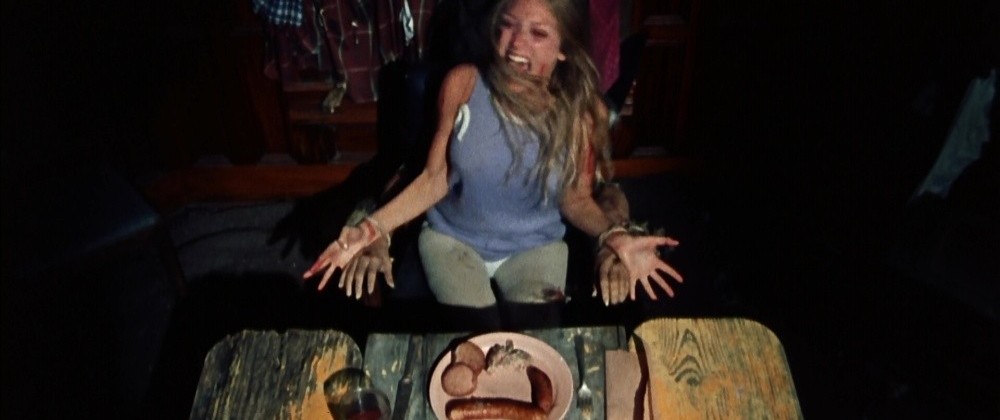
In 1968 the American horror genre drastically changed from the days of Boris Karloff and Vincent Price, of castles, ghosts and stormy nights, to an unvarnished, raw and straightforward form of horror. Audiences were no longer being told of the horrors being perpetrated around the corner but were being shown them directly. 1 Films such as Night of the Living Dead (George Romero, 1968), Carrie (Brian De Palma, 1976) and Halloween (John Carpenter, 1978) championed this move into a new age of postmodern horror that challenged both the viewer and societal norms. 2 Tobe Hooper’s The Texas Chain Saw Massacre (1974) was one of the first to pioneer the ‘slasher horror’ genre. The slasher film would evolve into a formula of highly sexualized, graphic violence with minimal plot and buckets of blood and a key Final Girl who outlives her teenage counterparts and emerges from the horrific events a changed woman.
The Texas Chainsaw Massacre tells the story of Sally, her brother Franklin and their friends who pile into a van in the blistering Texas heat to inquire about a relative’s grave. Along the way they pick up a wayward hitchhiker who proceeds to mutilate himself, intimidate them and is thrown out of the van. Low on gas, the group settle at an abandoned family home. They then proceed to explore the residence and get systematically bumped off by the chainsaw-wielding Leatherface, a character inspired by famous serial killer Ed Gein. As the only remaining character, Sally is tied to a chair and, for close to a third of the film, is taunted and beaten by a monstrous hillbilly family of ex-slaughterhouse workers. At the end of the film she escapes, waves down a truck driver that saves her from Leatherface’s advances, and then drives off in a second pick-up truck, maimed and laughing hysterically.
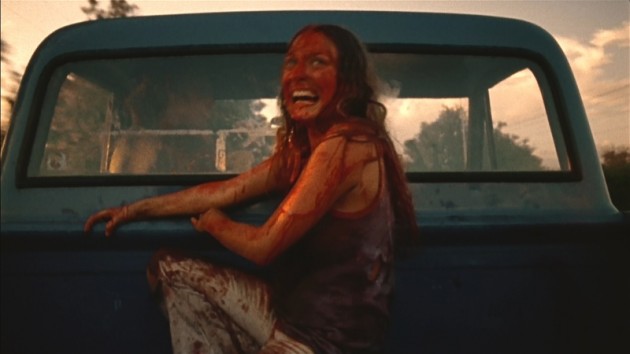
In 1974 The Washington Post criticised the film for its excessive use of violence. The article by Tom Shales stated that “watching this film is like watching target practice with human beings…” (2). 3 He continues by saying that the film is not “a-who-done-it but a who-gets-it-next” 4 In Carol Clover’s Men, Women and Chainsaws (1992) Clover states that the horror genre, or more specifically the slasher film, is a participatory kind of film experience and that the “art” of the horror film is the “art” of pornography and is largely based on the act of performance. It is not necessarily what happens within the film but rather how it is portrayed. 5 Similarly Linda Williams in her essay, “Film Bodies: Gender, Genre and Excess” (1991) discusses what she calls the “body genre” and that the excess of the horror genre is in its portrayal of violence and terror. She goes on to say that an analysis of these films are similarly dismissed by critics because of their low cultural status and states that these films say a great deal about gender construction. 6 The violence within this new school of horror is tremendously important and subverts the classical horror form. According to Michael A. Arnzen the violence and gore within these films is distinctly postmodern and is a stand-in for narrative and character development, which is frequently underplayed in this genre. Postmodernism is in itself predominantly preoccupied with the body, its fragility, its decomposition and its boundaries. 7 Isabel Pinedo states that there are five characteristics that separate classic horror from postmodern horror. The characteristics of postmodern horror are;
(1) There is a violent disruption of the everyday world;
(2) There is a transgression and violation of boundaries;
(3) The validity of rationality is thrown into question;
(4) There is no narrative closure;
(5) The film produces a bounded experience of fear. 8
Sally (Marilyn Burns) is the Final Girl of The Texas Chain Saw Massacre and throughout the film is portrayed as void of gender. At the end of the film she reclaims her right as a strong and new woman and appropriates a strong gender role. 9 Within this horrific tale Sally is regarded as a hero and not simply as a heroine. Classically the heroine is saved by the male and the hero must save the female and endure the hardships that follow. 10 Sally is the only survivor of her group and endures the hardships of a ruined society to literally laugh in the face of her iconic assailant. Surviving the horrible ordeal she is ushered into a brave new world by masculine agency which is manifested by the pickup driver at the end of the film. In the classic slasher film the Final Girl is portrayed as the least sexual in nature and it is the more sexualized friends that are always first to be killed. 11 The excessive family dinner torture scene in many ways helps to articulate the empowerment of Sally. She is beaten and battered by Leatherface’s family and screams and cries for help trying to reason with the homicidal, obviously mad, family. In many ways Sally’s screams and cries represent her femininity and it is for this reason that this is the moment when one relates most to the femininity of the main character. 12 Clover states that even if predominantly male, the audience is able to engage and identify with the Final Girl due to the fact that in the psychoanalytic model, “the threat function and the victim function coexist in the same unconscious, regardless of anatomical sex”(47). 13 Therefore it is for this reason that the audience, male or not, is able to sympathize with Sally and identify with her anguish and then to her rise to power. Williams similarly states that ‘body genre’ is one of mimicry and that the success of a film of this genre is largely based on the reaction of the audience to the spectacle. 14 The camera dwells on Sally’s plight excessively during the dinner scene and the viewer is made to bear witness to these atrocities for an unrelentingly third of the film. It is this scene that produces the largest reaction from the audience; the camera shoots Sally in extreme close ups and from various opaque angles to emphasize her panic and pain so as to arouse a greater reaction from the audience. Not only does this scene provoke a visceral reaction from the audience but the viewer more intensely sympathizes with the femininity of the character. During multiple points within this scene, the audience is given the perspective of Sally who is strapped to a chair. The fact that she escapes her assailants and laughs in the wounded face of Leatherface demonstrates her new found empowerment and reaffirms her sexuality. Sadomasochistic in nature the film allows the audience to identify with the Final Girl and celebrate her triumph over the killer.
Sarah Trencansky argues in her essay, “Final Girls and Terrible Youth” that the Final Girl subverts what Laura Mulvey calls the “Male Gaze” and is not simply an object that is possessed by the male. Mulvey states that the male is one that moves a narrative forward, takes action and even possesses the female character. 15 Though the author is primarily discussing the 1980’s Final Girl, The Texas Chainsaw Massacre similarly inverts the “Male Gaze” in multiple ways. The most stagnant point of the film is the lengthy dinner scene in which Sally is held captive by the redneck slaughterhouse family and is tirelessly tortured. The family taunt and beat Sally until she is given the opportunity to escape. Her escape is largely due to the inability of the decrepit Grandfather to murder her. The Grandfather is limp and can barely hold a hammer despite the hoots and howls of his son and grandchildren, Leatherface and the Hitchhiker. The fact that the narrative wanes at this point when Sally is possessed by the family demonstrates Trencansky’s point that the Final Girl within the slasher genre is in fact empowered and helps to move the narrative forward. The dinner scene similarly articulates the body genre’s sadomasochistic tendencies and the complex agency of power that is inherent in it. Within the body genre power and often powerlessness go hand in hand and very quickly moves from one to the other. 16 The Final Girl must subvert the patriarchal Texan society which is represented by the all male family that is impotent, perverse and gender confused. Power is for this reason ushered away from the family and given to Sally. 17
Leatherface and his redneck family represent the gender confused and failed masculinity of the southern patriarchal society. The failure of the society of old is immediately apparent as one reflects on the opening scene of the film. As the credits are shown, one can hear a slew of news reports dictating heinous acts being perpetrated all over Texas and the United States. Sudden flashes of light reveal a severely decomposed body in extreme close ups. A high pitched grinding sound is heard as the scene reveals the corpse, as is the sound of a man intently groaning. The broadcast slowly fades as a skull is revealed in the daylight. The radio then articulates that “It is believed that this incident is the first in a series…” the announcer continues to reveal the story of the grave robbing and states that this is “this hour’s top story”. The announcer goes on to list a series of terrible incidents that are occurring all over the south. The fact that it is only “this hour’s top story” and that this was “the first in a series” demonstrates a totally nihilistic and horrible setting, the male dominated south of the 1970s. The perpetrator of the grave robbing scene we later find out is the Hitchhiker and the flash of light at the beginning is assumedly the Polaroid camera that he carries with him. The redneck family is consistently related to the nihilistic decrepit setting throughout the film and the producers themselves have said that the success of the picture on the screen is largely due to the fact that the title of the film itself is Texas Chain Saw Massacre. 18 The family becomes apparently synonymous with the southern society of old. The representation of the monster as gender confused or impotent becomes most obvious when one reflects on Leatherface, perhaps the most iconic of slasher killers and who represents both virginal sexuality and transvestite sexuality. We first encounter Leatherface when Kirk enters the family’s decrepit house and the audience can hear the whimpers of a child. Once Leatherface is revealed and mechanically bashes Jerry in the head, he squeals like an animal. Clover states that femininity is usually associated with childishness while masculinity is associated with adulthood and the phallus. It is for this reason that Leatherface is gender confused and this is articulated by his childish demeanor (which he shares with Franklin). 19 Similarly when Sally is captured and brought to the dinner table Leatherface demonstrates transsexual qualities wearing an excessive amount of makeup, a wig and making female noises. The fact that Leatherface is gender confused but the only one capable of killing in the family articulates the failure of gender roles in traditional Texan society. 20
The bloodthirsty family harkens on a profound nostalgia for the 1950s America that has been lost. The family itself seems to articulate the dangers of nostalgia for traditional gender roles in a postmodern world. The father similarly demonstrates nostalgia at the dinner table when he states that he takes no pleasure in killing and that his father was a legend in his own right at the closed down slaughterhouse. The father figure harkens on the days of old and once the grandfather is revealed the audience realizes that the grandfather, the legend, can barely hold the hammer that is supposed to deliver Sally’s killing blow. The ridiculousness of this scene calls forth a prominent device in postmodern horror: humor. The use of comedy heightens the illogical nature of the horrific scene and helps to set a feeling of tension. Especially well crafted comedic moments can undercut the horror, which is why care must be taken to not be illogical and run the risk of self-parody, which would ruin the tension of the scene. 21 This scene in particular demonstrates the ridiculous nature of this family and the decrepit nature of the family’s masculinity. The Father tells Sally that her demise will not hurt in the least because the Grandfather will kill her with one strike of his hammer. The Grandfather is awoken from his slumber by sucking blood from Sally’s cut finger and proceeds to limply bash at her again and again. As Isabel Pinedo remarks, “In bewilderment, we cringe at the gallows humor and laugh at the terror”. 22 Pinedo similarly states that the irrational that is caused by these unnerving, comedic moments help to subvert Cartesian theories on rationality. Cartesian theory states that, “the construction of reason, rationality is masculine, associated with mastery, and requires the domestication of irrationality, which is feminine and associated with the bodily and disorder”. 23 Therefore the dominance of the comedic and the irrational and the Final Girl’s frantic reliance on intuition and instincts once again exposes the empowerment of the feminine in this sadomasochistic use of the body.
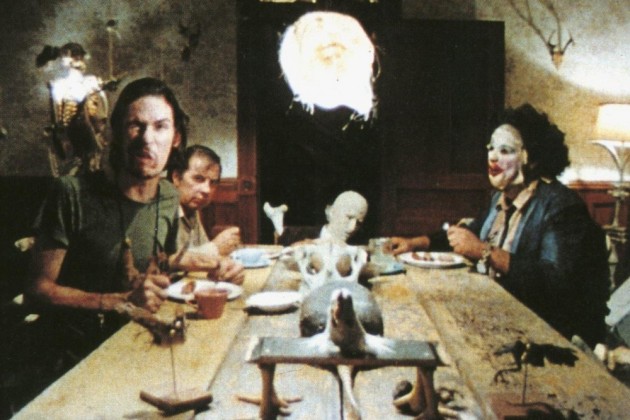
At the end of the film when Sally triumphantly escapes Leatherface’s grasp, the killer loses his phallic symbol, his chainsaw, and injures his leg with it. As Sally gets away he is wildly flailing in pain. The fact that Leatherface cannot control his phallus demonstrates Sally’s empowerment during the closing moments of the film. The defeat of the monster represents the refusal of the assigned role of woman in society and exposes the inherently repressive nature of society. 24
The representation of the secondary characters, especially those who are in the faithful Ford van with Sally, both emphasizes Sally’s strength as a strong female character and articulates the failings of a conservative patriarchal society. The primary male character within the film is Franklin who is wheelchair stricken and child-like in nature. The only two characters who are mentioned within the introduction of the film are Franklin and Sally and it becomes blatantly obvious who the dominant character is. Upon being first introduced to Franklin it becomes devastatingly apparent just how helpless he is, as he is wheeled out of the van to urinate in a can. The camera then cuts to the back of Franklin’s chair as a truck passes and the back wind sends Franklin flailing down into a ditch. He helplessly screams as he is thrown from his chair and whimpers as he lays on the ground. The utter powerlessness of this character is similarly articulated when they reach the abandoned house. The other travellers separate to explore the house and surrounding area, leaving him alone to stew in his self-pity. Alone, in a creepy deserted house, having been cut on the hand by the maniacal Hitchhiker, Franklin proceeds to throw a tantrum. This scene demonstrates both the childishness of Franklin while once again creating a comedic moment that is typical to postmodern horror and is particularly illogical and tense. Once again the Final Girl dominates the film and is empowered through the failure of her counterparts.
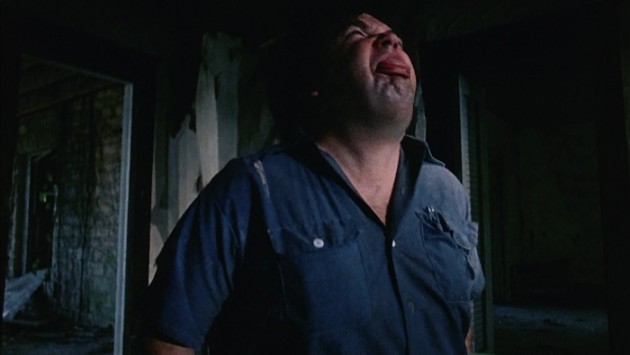
Childish Franklin
Kirk and his girlfriend, who are obviously the most sexual of the group, are the first to die. Williams states that in the body genre the often sexually active “bad” girls are first to be killed off allowing the Final Girl or “good” girl to survive. The Final Girl only becomes sexual at the end of the film by usually empowering herself sexually by appropriating a phallic power, which is separated from phallic pleasure. 25 The most frightening moments that occur within the horror genre occurs when a character is surprised sexually. This frequently occurs when a secondary character is supposedly going to meet with his or her lover and is surprised by the monster. The monster’s attack represents the symbolic castration of the secondary character which is almost a punishment for ill timed exhibition of sexual desire. 26 This is articulated in Texas Chain Saw Massacre when Pam is searching for Kirk and stumbles into Leatherface’s house. There, she is confronted by a slew of recycled animals on display which are incorporated into furniture and lampshades. She cowers on the ground exposing her bare back as the camera towers over her. Pam’s sexual desire is manifested previously in her coy urge to go “swimming” with her boyfriend and it is this that leads them to their untimely demise and her being surprised by the killer in his home. Attempting to escape the killer she runs out of the family’s residence and is abruptly grabbed from behind and dragged back in. The scene is shot from below from both the outside and the inside of the house as she is dragged indoors. The scene demonstrates the physical dominance of the killer over the young woman. Pam is then impaled on a meat hook and forced to watch helplessly as her boyfriend is sawed (off-screen) into pieces. The surprise and the repetitive nature of the symbolic castration of the sexualized character is usually deeply felt by the spectators and is linked to the knowledge of sexual difference by adolescents who are the demographic of slasher horror films. 27

Sexualized Victim
The other male characters within the film represent institutions within society and are largely the powerless. Police officers are the most common in the genre and there is often a marked age difference between the main group of adolescents and the police. This is accompanied by an inability to stop the monster from killing and this fact articulates the irrelevance and out of date nature of the patriarchal institution. 28 Not only are the representatives of the patriarchal society irrelevant but they are also absent from The Texas Chain Saw Massacre. The only representatives of adulthood within the film, other than the antagonist hillbilly family, are a drunk old man who sits horizontally in an old tire, and a garage attendant that is both unintelligible and who works at the psychotic family’s gas pump. Foucault states the family becomes an assimilator entity that purges otherness from its youth in order to model them into themselves. 29 The psychotic family’s house is right next door to Sally’s childhood home and it is the trip to check on her ancestor’s grave that brings her into the throws of the psychotic neighbours. The absence of any other adult within the film and the duality between the adolescent group of friends and the hillbilly family of psychotics demonstrates the move away from the modern society and an internalizing of a nihilistic world. It seems that this film is the perfect representation of the new school of postmodern horror in that its subject is primarily both the oppressed and repressed within culture. 30
Steven Koch’s article ‘Fashions of Pornography” that appeared in Harper’s Magazine in 1976 describes the movie as, “a vile piece of sick crap” and goes on to tirelessly rail against the film stating that its excessive use of violence and its treatment of woman are both unimaginative and sick. 31 What Koch obviously missed in his belligerent article is that the primary use of violence and the body within this film is to create a nihilistic and distinctly postmodern ethos that challenges the viewer’s conception of the classic narrative form and gender roles. Williams concludes her article on the body genre by blatantly stating, “One thing seems clear: … body genres which may seem so violent and inimical to women cannot be dismissed as evidence of a monolithic and unchanging misogyny.” 32 She goes on to point out that “To dismiss them as bad excess… is not to address their function as cultural problem-solving.” 33 Sally’s role as the Final Girl and the way in which she triumphs over all the other characters within the narrative demonstrates the gender empowerment within this film. The film’s “cultural problem-solving” 34 is most apparent in the use of violence within the film which is both nihilistic, irrational and distinctly postmodern. The postmodern elements of the film challenge America’s conception of both gender and youth and strives to expose a meaningless world that is both irrational and unrelenting. Robin Wood states that horror is the product of cultural strife and he continues by saying that horror, “currently the most important of all American (film) genres and perhaps even the most progressive… in its overt nihilism.” 35 Perhaps it is for this reason that The Texas Chain Saw Massacre was marked with such wide success despite its harsh critical reception. The film which cost $300,000 to make, boasted to have made within the first two weeks $600,000 and $20 million in the first two years. 36 The film’s portrayal of gender, violence, and the body in dilapidated Texas was tremendously influential on up and coming directors and taught a whole generation of youth that horror can captivate, castrate and of course compel.
Notes
- Brophy, Philip. “Horrality-The Textuality of Contemporary Horror Films.” Screen Vol. 27.Issue 1 (1983): p. 2-13. Print. ↩
- Zinoman, Jason. Shock value: how a few eccentric outsiders gave us nightmares, conquered Hollywood, and invented modern horror. New York, N.Y.: Penguin Press, 2011. Print. ↩
- Shales, Tom. “‘Chainsaw’: Another Sickening-Cinema Entry,” The Washington Post. Nov. 21, 1974, p. C13. ↩
- Shales. ↩
- Clover, Carol J.. Men, woman and chainsaws: gender in the modern horror film. S.l.: British Film Institute, 1993. Print. p.11. ↩
- Williams, Linda. “Film Bodies: Gender, Genre, and Excess.” Film Quarterly 44.4 (1991): 2-13. Print. p. 4. ↩
- Boss, Pete. “Vile Bodies And Bad Medicine.” Screen Vol. 27.Issue 1 (1986): p14-24. Print. p.8. ↩
- Pinedo, Isabel. “Recreational Terror: Postmodern Elements of Contemporary Horror Film.” Journal of Film and Video. 48.1/2 (1996): 17-31. Print. p.20. ↩
- Clover, Carol J. Men, woman and chainsaws: gender in the modern horror film. S.l.: British Film Institute, 1993. Print. ↩
- ibid., p. 59. ↩
- ibid., p. 40. ↩
- ibid., p. 61. ↩
- ibid., p. 47. ↩
- Williams, Linda . “Film Bodies: Gender, Genre, and Excess.” Film Quarterly 44.4 (1991): 2-13. p. 4. ↩
- Trencansky, Sarah . “Final Girls and Terrible Youth: Transgression in 1980s Slasher Horror.” Journal of Popular Film and Television Vol. 29.Issue 2 (2001): 64-73. Print. p. 67. ↩
- Williams, p. 8. ↩
- ibid, p. 67. ↩
- Zinoman, p. 148. ↩
- ibid, p. 50. ↩
- Clover, p. 47. ↩
- Pinedo, p. 29. ↩
- ibid, p. 29. ↩
- ibid, p. 23. ↩
- Trencansky, p. 68. ↩
- Williams, p. 8. ↩
- Williams, p. 11 ↩
- Williams, p. 11. ↩
- Pinedo, p. 68. ↩
- ibid, p. 67. ↩
- Brophy, Philip. “Horrality-The Textuality of Contemporary Horror Films.” Screen Vol. 27.Issue 1 (1983): p2-13. Print. p.18. ↩
- Zinoman, p. 149. ↩
- Williams, p. 12. ↩
- Williams, p. 12. ↩
- Williams, p. 12. ↩
- Clover, p. 63 ↩
- Zinoman, p. 145. ↩





